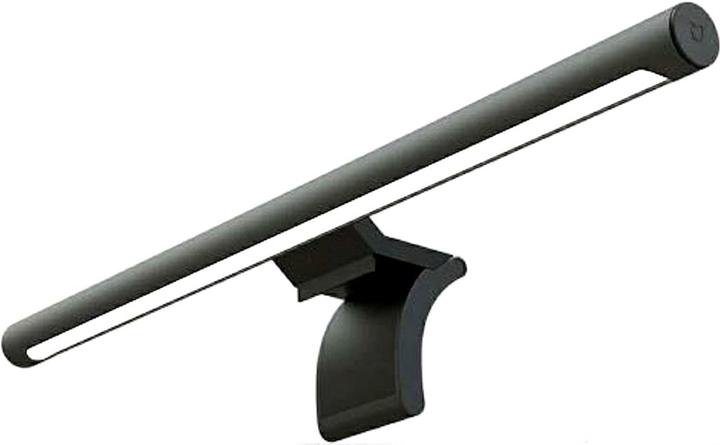

Which of these 3 affordable screen bars is best?
Yes, you really can get the perfect light for your desk without breaking the bank. I’ve compared three screen bars from Baseus, Hansa and Xiaomi ranging from 35 to 55 francs or euros.
Anyone who reads my articles knows that screen bars are one of my favourite gadgets. My first piece for Digitec was actually a screen bar review. Given how often the article has been read, you folks evidently share my enthusiasm. Ever since, I’ve been telling our team to keep the screen bars coming my way. This time, I’ve got three budget models to try out.
If screen bars are new to you, here’s what you need to know: you attach a screen bar to your computer monitor, and it lights up your desk from that position. I’ve divided my review into five sub-sections: Price, Features, Installation and operation, Brightness and light temperature and Colour rendering. I’ll award each product a rating of up to three light bulbs in each category (💡) and tot up the final scores at the end.
Price: none of these models top 55 francs or euros
Baseus i-Wok Screen Bar: At 35 francs or euros, this was the cheapest of the three products at the time of my review. 💡💡💡
Hansa Flash: Cost 45 francs or euros at the time of my review, positioning it in the middle of the price range. 💡💡
Xiaomi Light Bar: At 53 francs or euros at the time of my review, it’s not exactly pricey. Nevertheless, it’s 20 francs more expensive than the cheapest model. 💡
Features: only one screen bar offers more than the bare essentials
Baseus i-Wok Screen Bar: All the writing on the packaging’s in Chinese and English, and these are the only two languages you’ll find in the user manual. Although Baseus includes a 1.5-metre USB-C to USB-A cable with the lamp, there’s no charger. You’ll also have to do without a remote control and special sensors. You operate everything via three buttons on the front of the lamp. 💡
Hansa Flash: Hansa provides instructions in eight languages, including English, German, Italian and French. Again, you’ll have to live without a charger, remote control and sensors. The cable’s also 1.5 metres long. You operate the screen bar using two buttons on the left and right on the outside of the lamp. One of these buttons is reserved for a special feature. The Flash screen bar has two additional lights pointing diagonally upwards, which you can use to spotlight, for example, your favourite poster on the wall behind your desk. It gets a bonus point for that. 💡💡💡
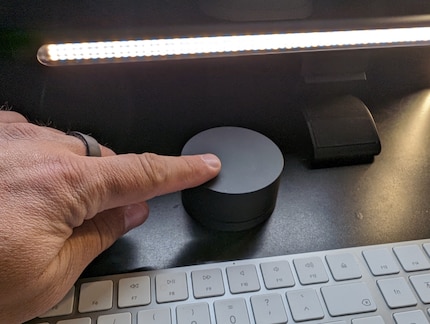
Source: Lorenz Keller
Xiaomi Light Bar: The Xiaomi model is the only one in this comparison to have a remote control. Instead of having to switch on and adjust the light on the screen bar itself, you can do so via a handy control on your desk. What the screen bar doesn’t come with are the AAA batteries necessary for the remote control. As is the case with the competition, there’s no charger included either. Incidentally, the USB-C cable included with the lamp is 1.2 metres shorter than its Baseus and Hansa competitors. Available in 15 languages, the user manual covers all needs. 💡💡💡
Installation and operation: buttons prove to be a tricky issue
Baseus i-Wok Screen Bar: Fortunately enough for anyone who speaks neither English nor Chinese, installing the screen bar is self-explanatory. You just plug in the cable, clamp the lamp onto your monitor and it’s ready to go. The Baseus model has a high-quality look. However, since the bracket and the lamp can’t be separated from each other, you need to play around with the whole contraption until you’ve ideally positioned the screen bar. On my LG monitor, which is around two centimetres thick, I’ve got the lamp clamped at a slight angle so that it shines downwards along the display surface and doesn’t dazzle me. It’s not completely stable, but it’s fine as long as I don’t move the monitor. Unfortunately, the buttons have a strange pressure point, and they don’t always respond the way I’d like them to. 💡
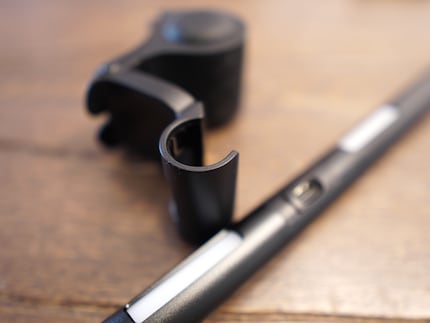
Source: Lorenz Keller
Hansa Flash: The thing that makes the Flash immediately stand out compared to the Baseus model is that the holder and the lamp are separate. I click the screen bar, fitted with LEDs, into the holder. The main advantage of this? I can easily rotate the lamp forwards and backwards in the holder, which is perfect for fine-tuning the light. As a result, the Hansa Flash is held firmly on the monitor and is easy to operate using the touch buttons. Unfortunately, the holder, particularly the arm that houses the lamp, is made of cheap, hard plastic. Despite the lamp having just one button, it’s surprisingly intuitive to operate once I’ve got the hang of switching the lamp off with a double tap and adjusting the brightness with a long press. 💡💡
Xiaomi Light Bar: The Xiaomi’s holder and screen bar are also separate components. These dock together magnetically – a very elegant solution. Overall, this light bar is the highest quality of the three test devices. Since the remote control is paired with the screen bar by default, I can use it straight away. I switch on the light by tapping a large dial, which I can turn to adjust the brightness. It’s all coherent and very easy to use. Plus, the Xiaomi’s mount doesn’t really need to clamp the screen, as it’s held in place by weight. It’s stable, even when I wobble the monitor. However, if I accidentally touch the screen bar itself, the magnetic holder comes off much more easily compared to the other devices. 💡💡💡
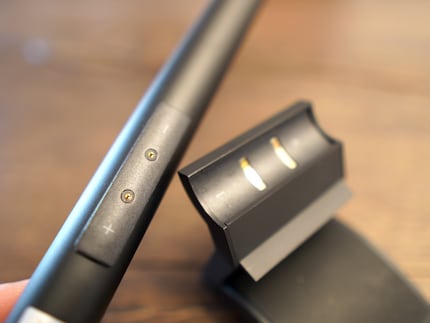
Source: Lorenz Keller
Brightness: the most expensive lamp isn’t the brightest
It feels like there’s barely a difference between the three light bars. They’re bright enough, and provide good reading light when I’m at my desk. As is usually the case with screen bars, the lighting’s good – especially in the area directly in front of the screen. In other words, the place I keep my keyboard or documents.
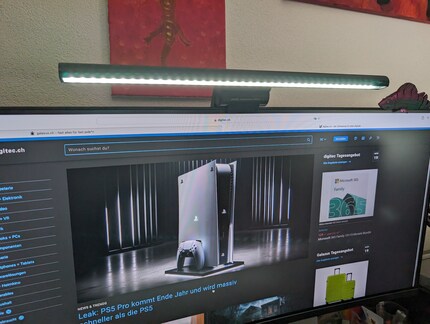
Source: Lorenz Keller
The surrounding office is barely lit. Light produced by the screen bar doesn’t dazzle me, and isn’t reflected on the screen. It’s the perfect working environment for me.
But are the three models really equally bright? To find out, I used a light meter to collect data from various points on my desk.
The Hansa lamp produces the brightest light at the measuring point near the keyboard, reaching 534 lux. Meanwhile the Xiaomi comes in at 432 lux, with the Baseus measuring in at 345 lux. I can dim all three to about the same level. Measuring at the same point, with the devices on minimum light intensity, I measure 44-46 lux.
The dimming feature on all three models is fully adjustable, which is commendable. However, the Xiaomi screen bar scores a bonus point. As shown by the measurements I took at various points on my desk, the Xiaomi produces brighter light over a larger area than its two competitors.
Baseus i-Wok Screen Bar: 💡
Hansa Flash: 💡💡💡
Xiaomi Light Bar: 💡💡💡
Temperature, colour rendering, flickering: none of the lamps flicker
Fortunately, my measuring device has a special mode to detect flickering that strains the eyes. Results from all three test devices are in the green zone, so nothing concerning there. One thing to bear in mind is that if you’re using a monitor without a screen bar, flickering is more noticeable than with one. This means it’s more pleasant and less tiring for your eyes if you always have the lamp on.
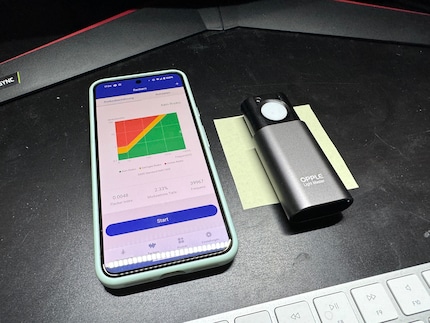
Source: Lorenz Keller
All three devices allow you to change the temperature of the light – from warm to cool white. My measurements clearly show that the Xiaomi Light Bar covers the widest spectrum. Not only that, but this is the only screen bar that allows me to gradually move from warm to cold light.
On the Hansa Flash and the Baseus i-Wok Screen Bar, there are only three settings: warm light, cold light or both LEDs switched on. You don’t get that seamless adjustment.
Last but not least, I measured the Colour Rendering Index (CRI). This indicates how natural the colours appear when they’re exposed to electric light. Natural-looking colours, for instance, wouldn’t have a yellow tint. A CRI rating of 100 means true-to-life colour rendering. Over 90 is considered very good, while over 80 passes as a good rating.
The Hansa screen bar comes out on top, followed by the Xiaomi. However, even the Baseus manages to achieve a decent CRI rating.
Time to award the points:
Baseus i-Wok Screen Bar: The worst rating for both colour temperature and colour rendering (although it’s not considerably far behind). 💡
**Hansa Flash:**Performs well overall in terms of CRI and temperature. 💡💡💡
Xiaomi Light Bar: Just as good as the Hansa. 💡💡💡
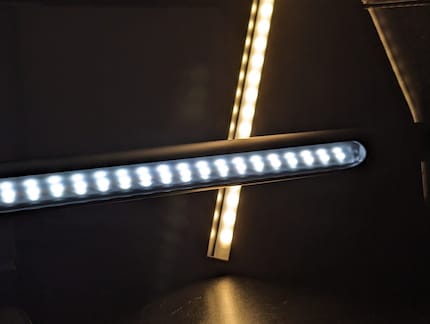
Source: Lorenz Keller
Verdict: despite the tie, one model clearly gets my recommendation
If I add up the points, one thing is clear. The cheapest of the three models is the loser in this comparison. Although the Baseus i-Work Screen Bar isn’t a bad product in itself, the competition outperforms it in every respect. In my opinion, 10-20 francs isn’t worth saving.
The Hansa Flash and the Xiaomi Light Bar are tied for first place. However, having tested all the devices, it’s a no-brainer for me. I’d invest the extra 10 francs and buy the Xiaomi,
mainly because of the remote control. As I switch the screen bar on and off several times a day, occasionally adjusting the brightness, it’s much more convenient to do it from the desk via remote control than using buttons on the screen bar. In this respect, the Xiaomi has a clear advantage over the other two models. What’s more, there’s always a risk I’ll accidentally adjust something like the angle of the light or monitor while I’m fiddling with the screen bar.
However, on the whole, the Xiaomi Screen Bar manages to win me over. Higher-priced models are sometimes slightly brighter and have sensors that automatically adjust the brightness to ambient light. That’s a luxury I don’t necessarily need. For a price of just over 50 francs or euros, I get a good screen bar that meets all my lighting needs in my home office.
Which screen bars should I test next? There are still a few more in the range that I haven’t reviewed – and I’d be happy to illuminate you (and my desk) some more. Leave a comment and let Lorenz the Screen Bar Genie grant your wish.
Gadgets are my passion - whether you need them for the home office, for the household, for sport and pleasure or for the smart home. Or, of course, for the big hobby next to the family, namely fishing.
Practical solutions for everyday problems with technology, household hacks and much more.
Show all

